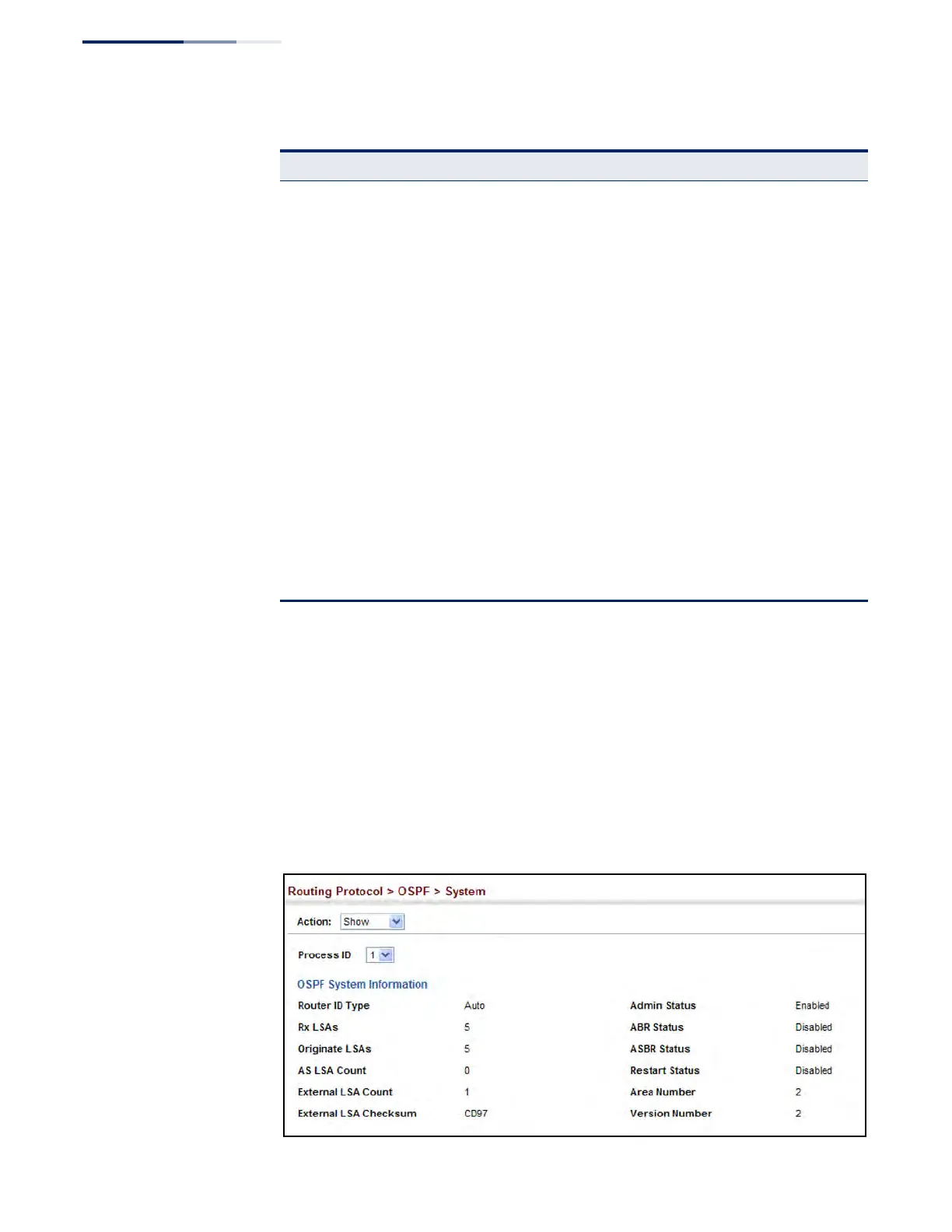Chapter 19
| Unicast Routing
Configuring the Open Shortest Path First Protocol (Version 2)
– 724 –
Web Interface
To show administrative settings and statistics for OSPF:
To display general settings for OSPF:
1. Click Routing Protocol, OSPF, System.
2. Select Show from the Action list.
3. Select a Process ID.
Figure 489: Showing General Settings for OSPF
Originate LSAs The number of new link-state advertisements that have been
originated.
AS LSA Count The number of autonomous system LSAs in the link-state database.
External LSA Count The number of external link-state advertisements in the link-state
database.
External LSA Checksum Checksum of the external link-state advertisement database.
Admin Status Indicates if there are one or more configured OSPF areas with an active
interface (that is, a Layer 3 interface that is enabled and up).
ABR Status
(Area Border Router)
Indicates if this router connects directly to networks in two or more
areas. An area border router runs a separate copy of the Shortest Path
First algorithm, maintaining a separate routing database for each area.
ASBR Status
(Autonomous System
Boundary Router)
Indicates if this router exchanges routing information with boundary
routers in other autonomous systems to which it may be attached. If a
router is enabled as an ASBR, then every other router in the
autonomous system can learn about external routes from this device.
Restart Status Indicates if the OSPF process is in graceful-restart state.
Area Number The number of configured areas attached to this router.
Version Number The OSPF version number. The OSPF protocol implemented in this
device is based on RFC 2328 (Version 2). It also supports RFC 1583 (early
Version 2) compatibility mode.
Table 43: OSPF System Information (Continued)
Parameter Description

